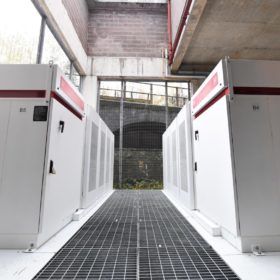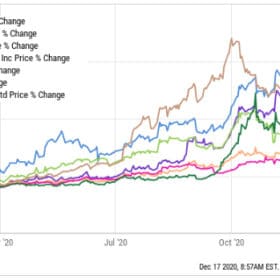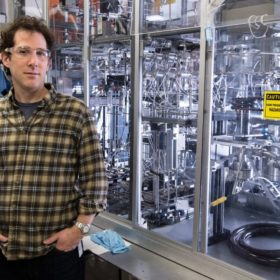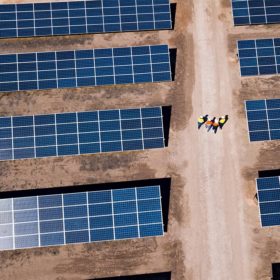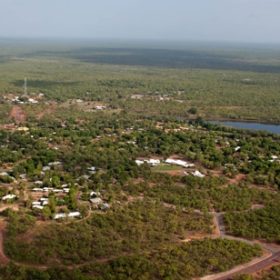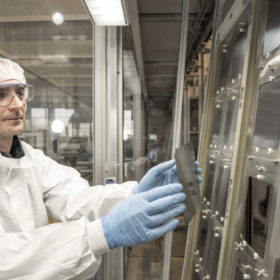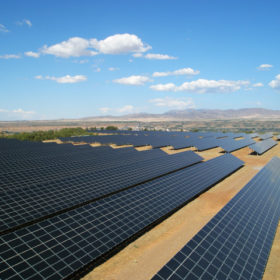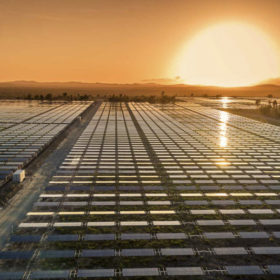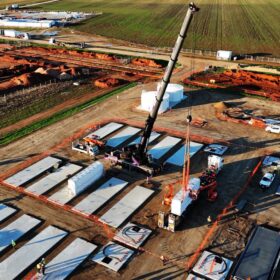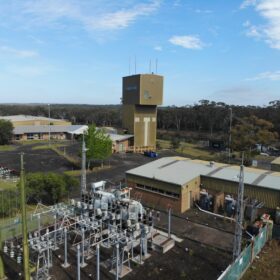United States’ DOE offers an energy storage strategy, publishes detailed technology cost estimates
The strategy includes accelerating the transition of technologies from the lab to the marketplace, focusing on ways to manufacture technologies at scale in the United States and ensuring secure supply chains to enable domestic manufacturing.
Solar stocks finish as 2020’s hot ticket
In spite of this year’s tumult, many solar companies’ stock prices have seriously soared – with a number of companies seeing their share price quadruple in the last year.
New approach to III-V tandems sets 32.9% efficiency record
A collaboration between the U.S. National Renewable Energy Laboratory and the UNSW has yielded a new efficiency record of 32.9% for a tandem cell device utilizing III-V materials. Key to the achievement was a new technique enabling the researchers to take advantage of “quantum wells” in the material that serve to trap charges and enable tuning of the cell bandgap to absorb more of the light spectrum.
Victorian 30 MW solar farm acquired by startup, securing future
Commercial rooftop solar startup CleanPeak Energy has acquired the 30 MW project location just outside the northern Victorian town of Wangaratta, its first foray into utility-scale solar.
NT mining town transitions to tourism hub powered by renewables
A mining town in the Northern Territory will be renewed by renewables after a multimillion-dollar cash injection from the Gunner government.
Australian research improves the scope and efficiency of PV light sensitisers
Australian scientists have developed an algorithm to increase both the efficiency and compatibility of light sensitisers in solar panels, encompassing silicon cells for the first time.
Oxford PV retakes tandem cell efficiency record
Perovskite developer Oxford PV has set a new world record for perovskite-silicon tandem cell efficiency at 29.52%, edging out the previous record set less than a year ago by Helmholtz Zentrum Berlin. The new record has been certified by the U.S. National Renewable Energy Laboratory.
Centre-right think tank demands emissions-reduction agenda
Australia needs an orderly, least-cost, lowest-disruption transition to renewable energy. Set a target. Retire coal. Support displaced workers. Get it done. The Blueprint Institute’s new report is surely 2020’s last logical word in calling the Federal Coalition to action.
Growing renewable capacity drives energy bills down to 2022/23
The Australian Energy Market Commission’s latest annual Residential Electricity Price Trends report shows costs reducing as renewable build out replaces inefficient coal-fired generation, and more lowest-cost renewable supply is on the way.
2020 Year in Review
Soon 2020 will only be a worry to future high-school history students. But when they ask us if anything good at all happened in 2020, remember this review and tell them that solar PV shone in the darkness. Despite the mess of it all, 2020 has been another good year for Australian solar. The industry has demonstrated resilience, and significant progress has been made in the fields of energy storage, green hydrogen and others.
